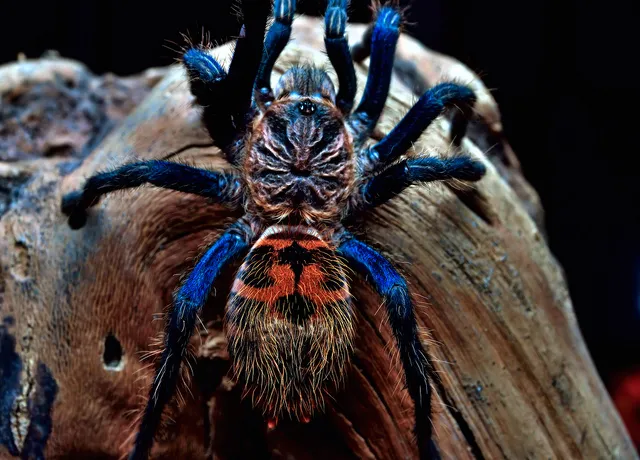The Greenbottle Blue Tarantula, scientifically known as Chromatopelma cyaneopubescens, is a stunning and captivating spider that has gained immense popularity among tarantula enthusiasts. Known for its vibrant colors and relatively docile temperament, this species offers a rewarding experience for both novice and experienced keepers. This article delves into 7 fascinating facts about the Greenbottle Blue Tarantula, providing insights into its characteristics, behavior, and care requirements, showcasing why it’s a beloved pet in the arachnid world. From their striking appearance to their unique behaviors, discover what makes this tarantula so special.
Greenbottle Blue Tarantula Characteristics
Appearance and Coloration
The Greenbottle Blue Tarantula is celebrated for its striking appearance. Its carapace, or the top part of its body, is typically a metallic green or bluish-green hue, resembling the color of a green glass bottle when light hits it. The legs showcase a vibrant mix of blue, orange, and red colors, creating a stunning contrast against the body. The abdomen is usually a deep orange or red with dark markings, adding further visual appeal. The overall color combination makes this tarantula one of the most visually appealing species in the hobby. Young tarantulas may have less vibrant colors, which gradually intensify as they mature.
Size and Lifespan
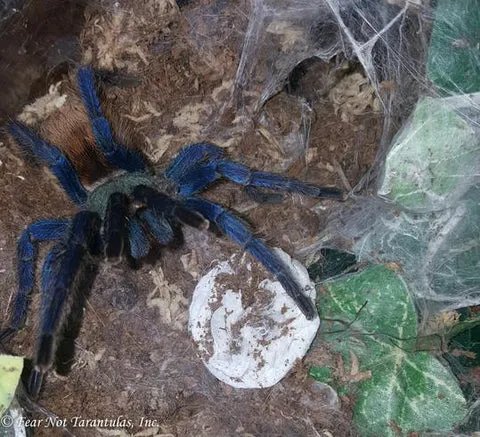
Greenbottle Blue Tarantulas are considered a medium-sized tarantula species. Adult females typically reach a leg span of around 5 to 6 inches (13 to 15 cm), while males are often slightly smaller. The lifespan of this species varies between the sexes, with females living significantly longer than males. Females can live for 12 to 15 years or even longer under optimal care, while males typically live for only 2 to 3 years after reaching maturity. The lifespan difference highlights the importance of proper care to ensure a long and healthy life for your tarantula.
Origin and Habitat
Natural Environment
Native to the arid regions of Venezuela, the Greenbottle Blue Tarantula thrives in a warm, dry environment. Their natural habitat typically includes scrublands and areas with sparse vegetation. They are well-adapted to survive in these conditions, often found in burrows or under rocks where they can escape the intense sun. The climate in their native environment has distinct wet and dry seasons, which affects their behavior and activity levels throughout the year. Understanding their natural habitat is key to replicating appropriate living conditions in captivity.
Geographic Distribution
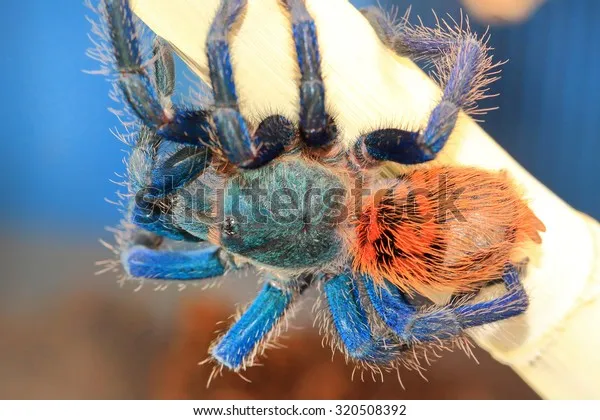
The Greenbottle Blue Tarantula’s geographic distribution is primarily confined to the Paraguaná Peninsula in northwestern Venezuela. This specific region provides the ideal climate and ecological conditions that support their survival. Their presence in this area highlights the importance of conservation efforts to protect their natural habitat, as they are endemic to this unique region. The specific habitat also influences their behavior and other characteristics which makes the study of their geographic distribution crucial to understanding their natural history.
Behavior and Temperament
Webbing and Burrowing
Greenbottle Blue Tarantulas are known for their elaborate webbing, which they use to create a secure and comfortable environment. They are avid webbers, often constructing extensive webs within their enclosure. The webbing serves multiple purposes, including creating a habitat, capturing prey, and providing a safe space to retreat. They typically build a web from the ground up, and this behavior can be observed in captivity. This webbing behavior is an integral part of their daily lives and a fascinating aspect of their natural behaviors.
Defensive Mechanisms
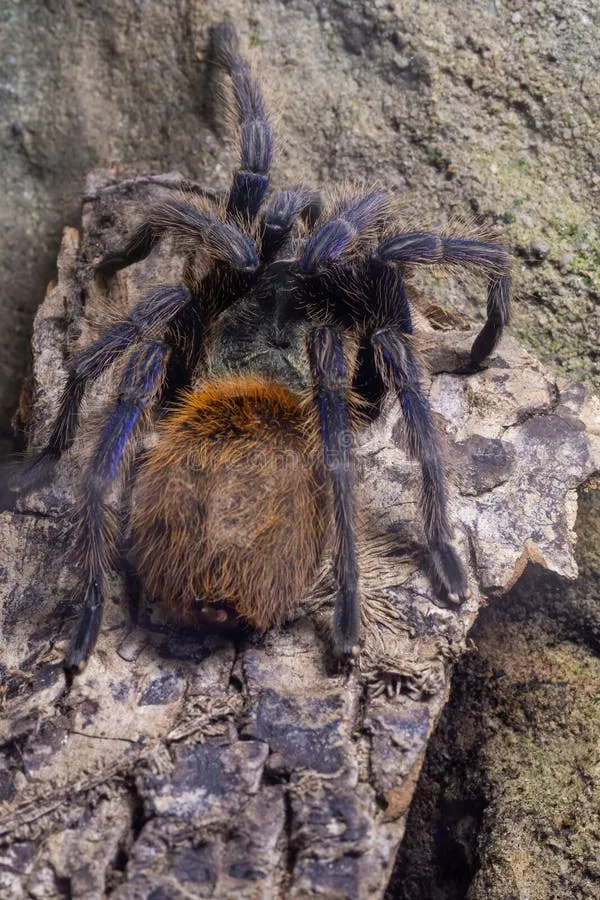
While generally considered docile, Greenbottle Blue Tarantulas possess defensive mechanisms, such as flicking urticating hairs if they feel threatened, which can cause mild skin irritation. They can also bite as a last resort. However, they are not considered aggressive and are less likely to bite than other tarantula species. It’s important to handle them with care and respect their space to minimize the risk of triggering these defenses. They usually try to escape before resorting to defensive actions. Observing these defensive behaviors helps in understanding and respecting their natural behaviors.
Diet and Feeding Habits
What Greenbottle Blue Tarantulas Eat
In the wild, Greenbottle Blue Tarantulas are opportunistic predators, feeding on a variety of insects and small invertebrates. In captivity, they can be fed a diet primarily consisting of crickets, roaches, and other commercially available feeder insects. It’s essential to provide a varied diet to ensure they receive the necessary nutrients for their growth and well-being. It is also recommended to offer pre-killed insects to avoid any potential harm from the live feeders. Supplementing their diet with occasional treats, such as mealworms, can also be beneficial.
Feeding Frequency
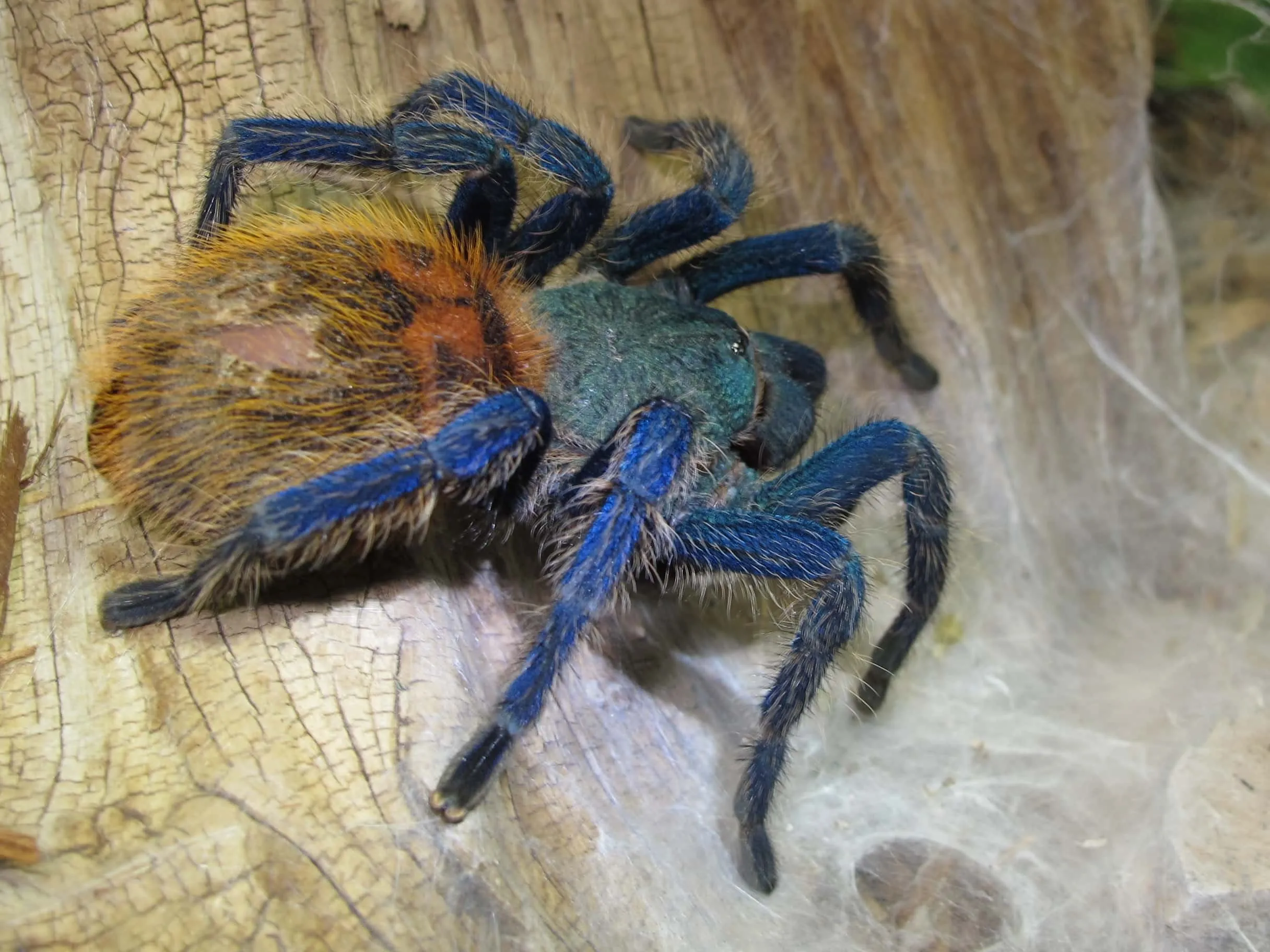
The feeding frequency for Greenbottle Blue Tarantulas depends on their age and size. Spiderlings should be fed more frequently, about 2-3 times per week, while adults can be fed every 1-2 weeks. It’s important to monitor their feeding habits and adjust the frequency accordingly. Overfeeding can lead to health problems, while underfeeding can cause them to become stressed and lethargic. Providing access to fresh water at all times is also crucial to their well-being. The right feeding frequency helps in maintaining their health and optimal growth.
Molting and Growth
Molting Process Explained
Molting is a natural process in which tarantulas shed their exoskeleton to grow. The Greenbottle Blue Tarantula, like all tarantulas, undergoes molting periodically throughout its life. During molting, the tarantula will create a new, larger exoskeleton underneath the old one and then shed the old one. The frequency of molting decreases as they mature. This process is crucial for their growth and development. It’s important to maintain a stable environment to support this process and to avoid disturbing the tarantula during molting.
Growth Stages
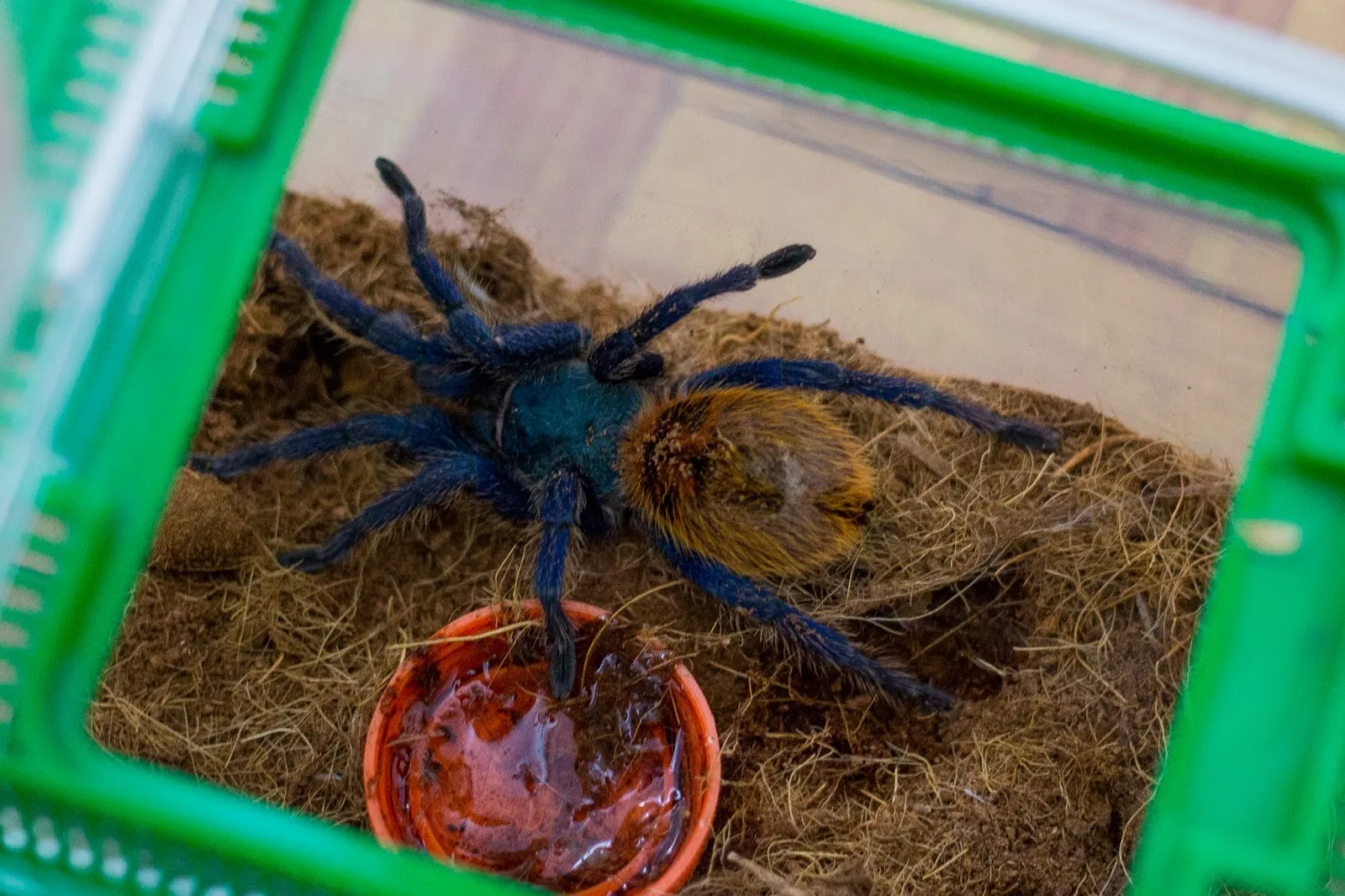
The growth stages of the Greenbottle Blue Tarantula involve several molts. Spiderlings go through more frequent molting cycles than adults. Each molt allows them to grow larger and develop their characteristic colors. The growth stages can be tracked by observing the discarded exoskeletons. Providing them with adequate food and the correct environment are crucial aspects to facilitate their growth. Proper care during these stages will ensure the healthy development of the tarantula and the vivid colors that the species is known for.
Conservation and Availability
Captive Breeding
Greenbottle Blue Tarantulas are frequently bred in captivity. Captive breeding programs contribute to the availability of this species in the pet trade and reduce the pressure on wild populations. This also allows for better control over their health and lineage. Breeding involves specific protocols to ensure the health of both the male and female, and successful breeding contributes to the overall health of the captive population. Proper care from the breeders is vital to ensure the survival of spiderlings.
Conservation Status
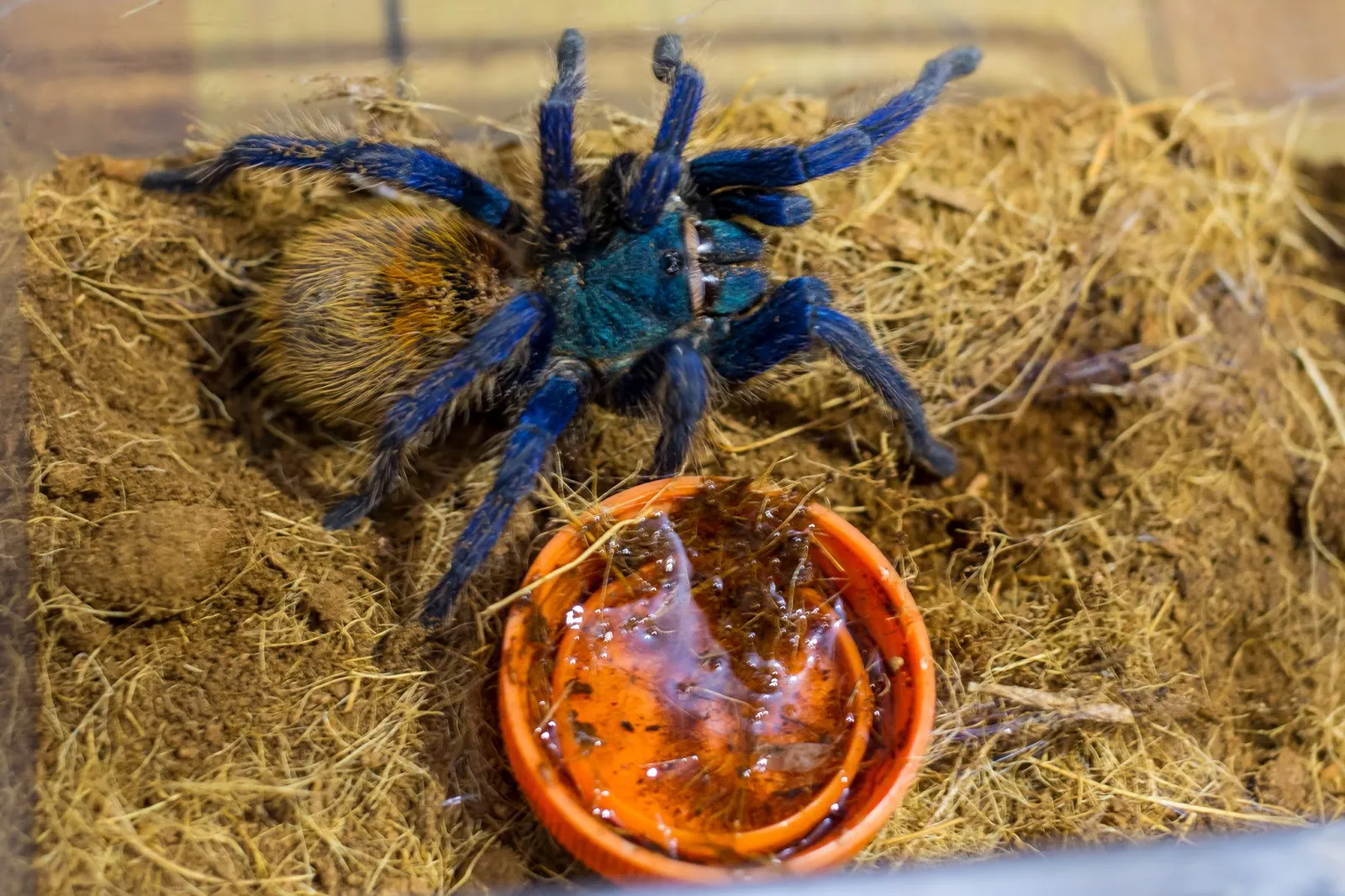
Currently, the Greenbottle Blue Tarantula is not listed as threatened or endangered. However, it’s important to be mindful of responsible pet ownership. Buying from reputable breeders helps support sustainable practices. Monitoring and researching the current conservation status ensures the preservation of the species. Sustainable practices in the pet trade are crucial for the conservation of this species. Awareness regarding the conservation status is important for the long-term health of the species.
In conclusion, the Greenbottle Blue Tarantula is a fascinating species that offers a rewarding experience for tarantula keepers. With their striking appearance, unique behaviors, and relatively manageable care requirements, they have become a favorite among enthusiasts. Understanding these 7 facts provides a solid foundation for anyone considering this species as a pet, ensuring they can provide the best possible care for a long, healthy, and vibrant life. The Greenbottle Blue Tarantula’s beauty and fascinating characteristics continue to captivate and inspire a deeper appreciation for the amazing world of arachnids.
